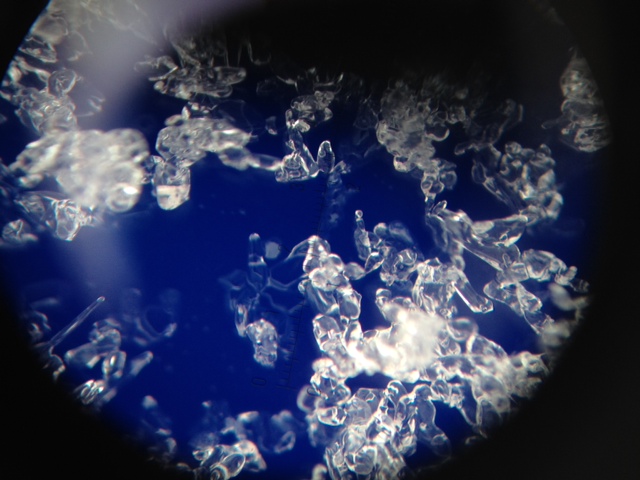
I've been trying to think of a way to discuss the faceting period that occurred from November 20 to Dec 1 and haven't really come up with anything. But, I did have an interesting email conversation with Greg Gagne, one of our top observers, on this subject that I thought some folks might find interesting.
Greg Gagne Dec 1 (2 days ago) to me Hey Brett -
Got out htis morning and was curious what the faceted snow looked like underneath the new snow. Am putting together an obs, but curious your thoughts on the preserved facets. Small grains (.5 mm) that under the scope even showed some rounds as well. Am thinking the facets were the result of long duration, as it wasn't necessarily all that cold nor were the crystals low-density stellars, but rather were some rimed crystals and wind-blown particles. Am wondering if this is why the facets don't look all angular under the scope.
Am I somewhat on the right track??
That said, it does look like the faceted layer will be a player once we place a slab on top!

Kow > <photo 2.JPG> Brett Kobernik 1:46 PM (17 hours ago) to Greg Greg,
I've found similar looking grains as you in many areas. I've also found a few that are a bit more advanced.
Yes, the initial grains were rimed and wind blown particles which do facet differently than stellars. I don't think I'd be able to identify what the original grains were by just looking at the type of facets they'd turned into. Perhaps with some more practice.
You are correct with duration. Even though it was quite warm, the long duration with relatively small gradients appears to have done the trick. But, keep in mind that we are taught that things happen more rapidly at warmer temperatures. So, take a gradient of 5C per 10cm with a mean temp of -20C and a gradient of 5C per 10cm with a mean temp of -10C. Supposedly, the warmer mean temp should produce more facets with everything else equal. This appears to be what happened. Unfortunately, I do not have any data for this period because I've been busy wrapping things up with our website. I do know, however, that the mean snow surface temps were never all that cold during the period.
The other thing is of course the thin cover. Areas where the cover is thinner will have a larger overall gradient. I've attached a diagram that I was using to describe this. In that diagram it shows how the gradient right near the surface can be fairly similar between thick and thin areas while the overall gradient is steeper. This is not always the case though as I've found that the surface gradient is usually slightly steeper as well in the thinner areas.
Good stuff Greg!!
KOW







